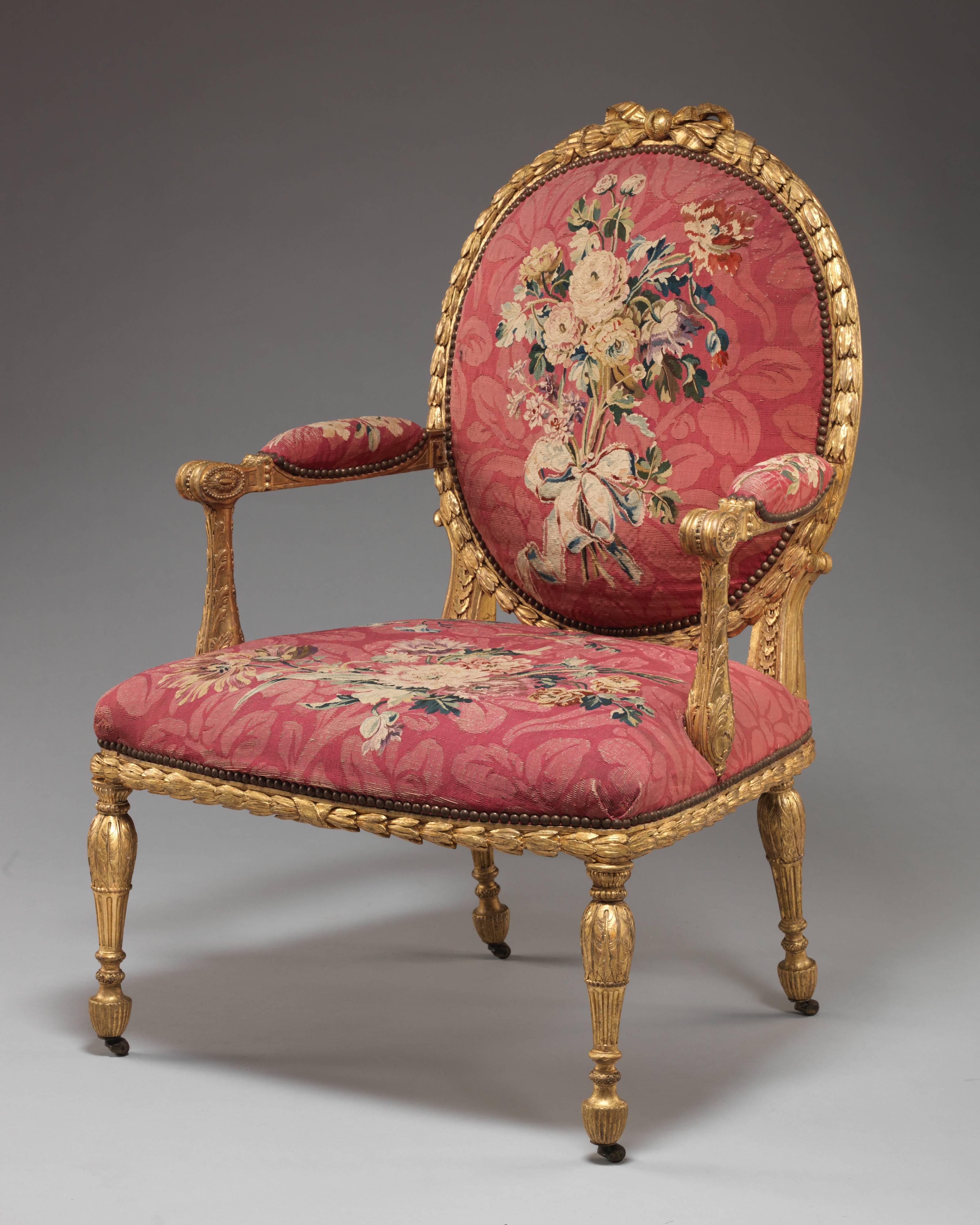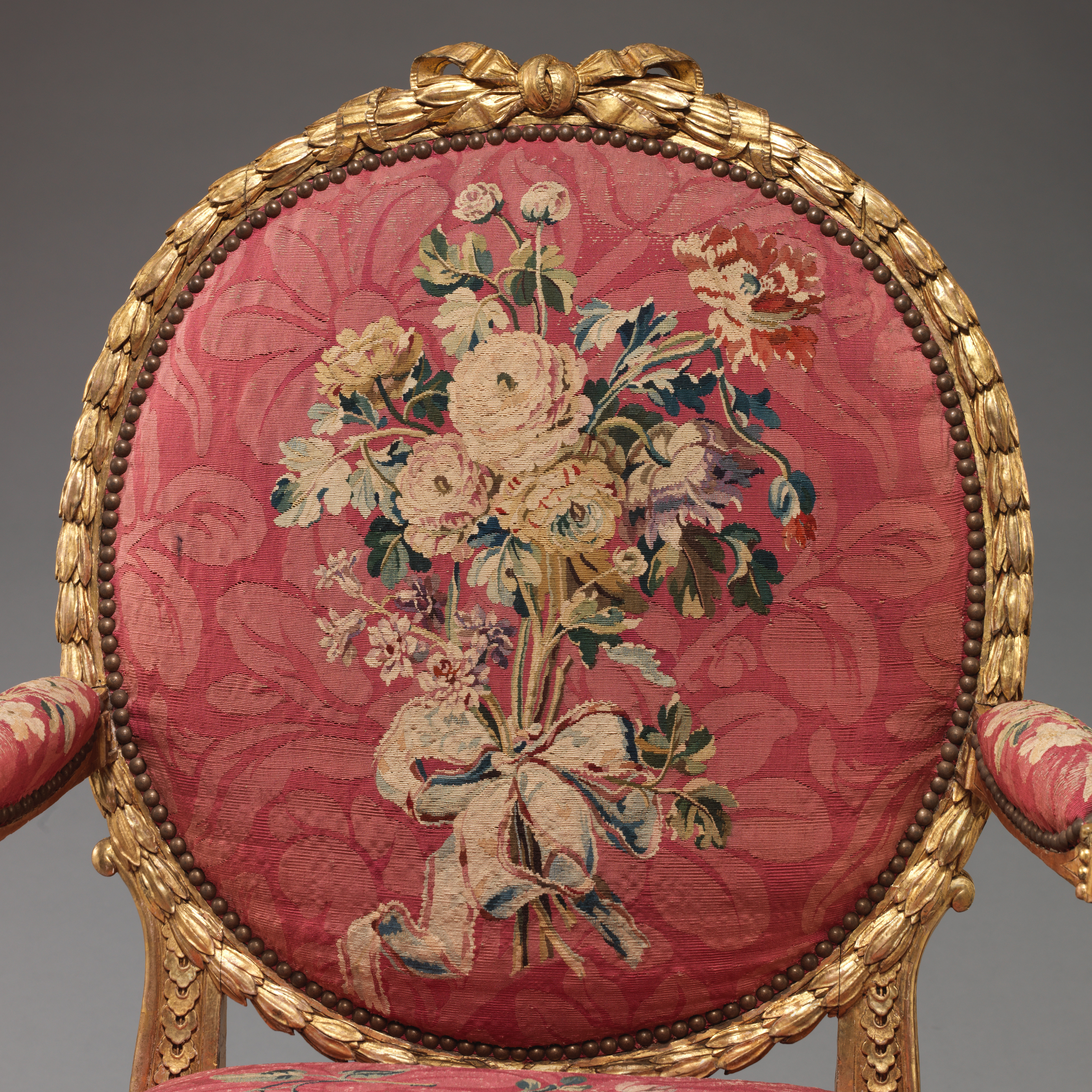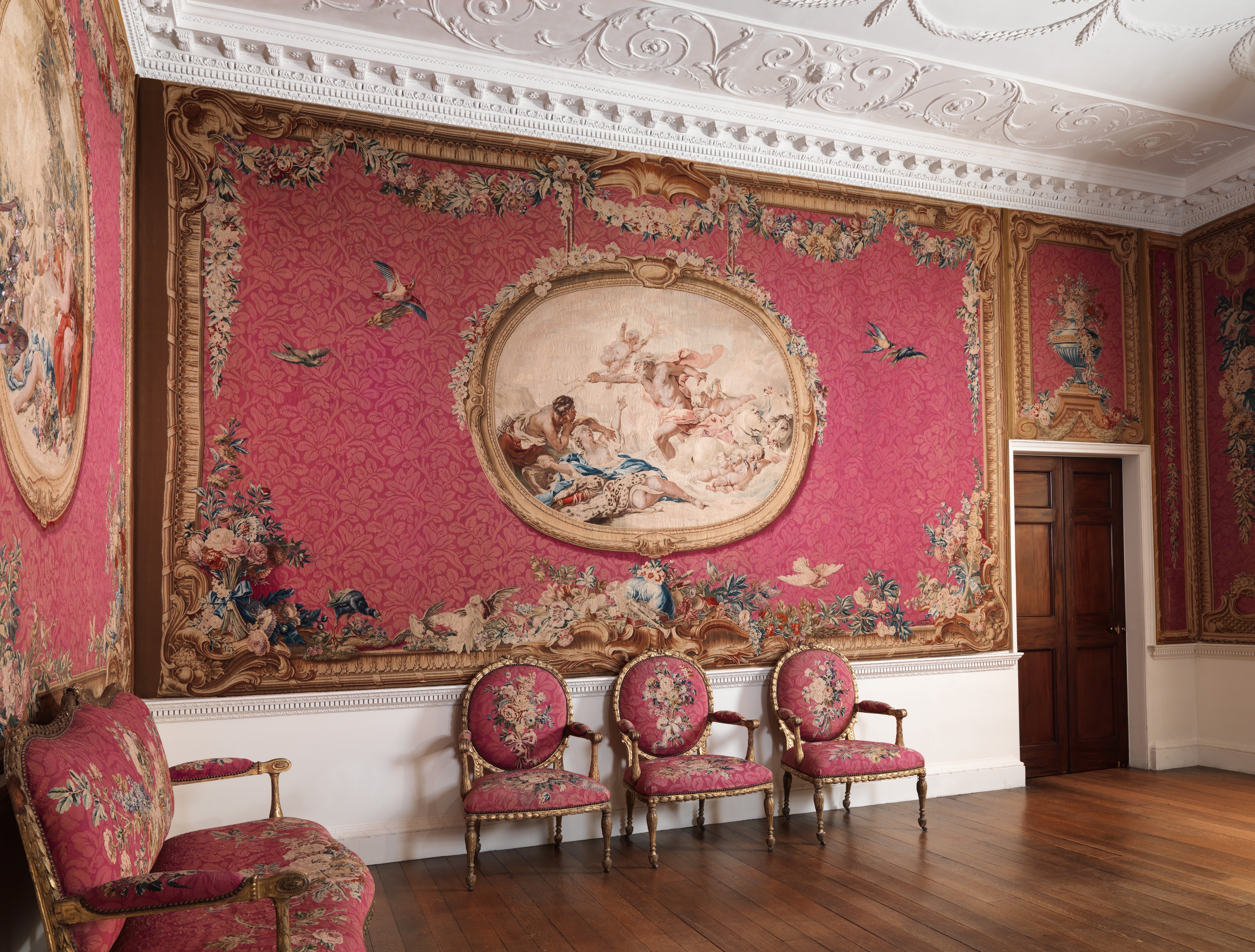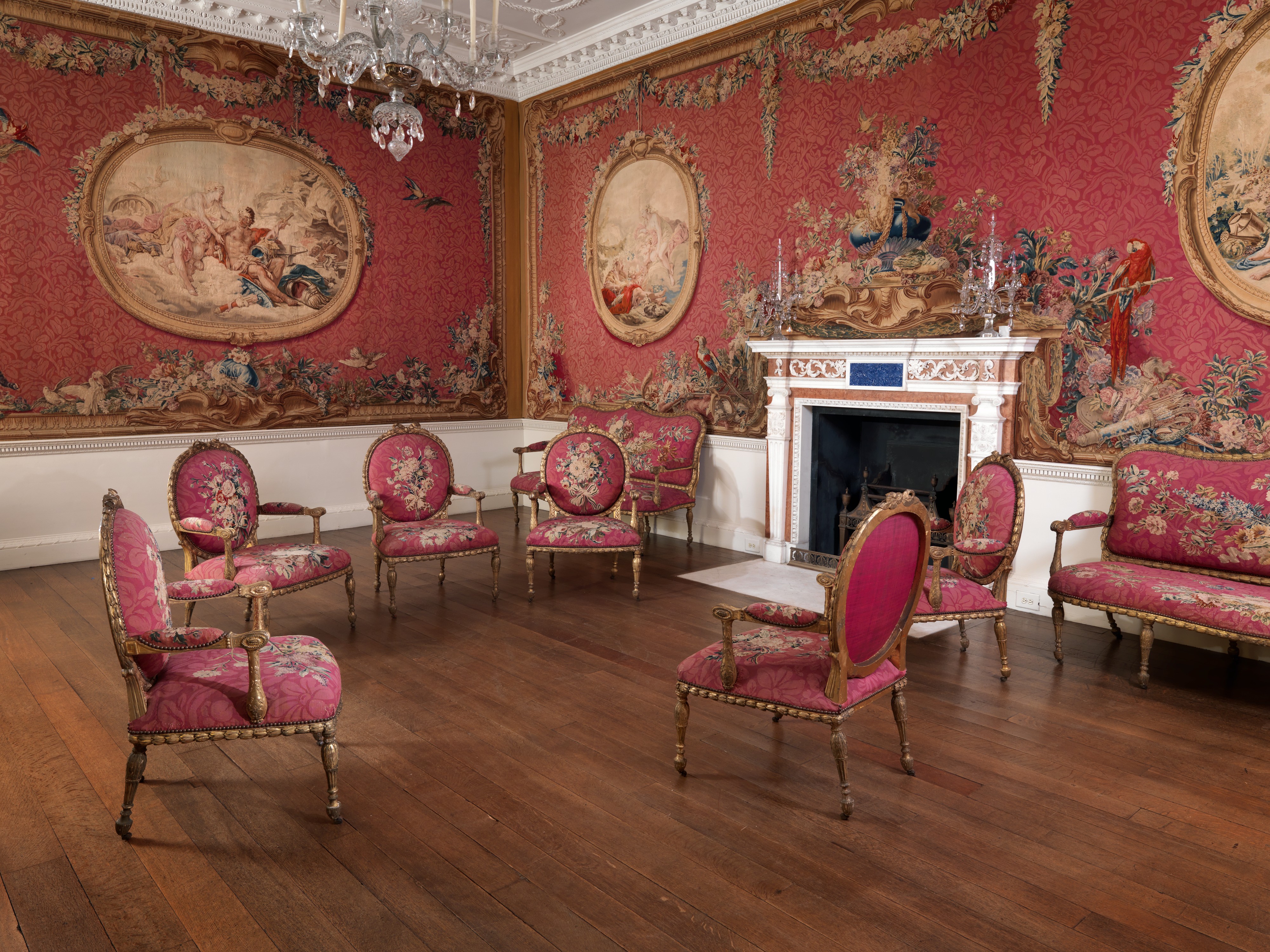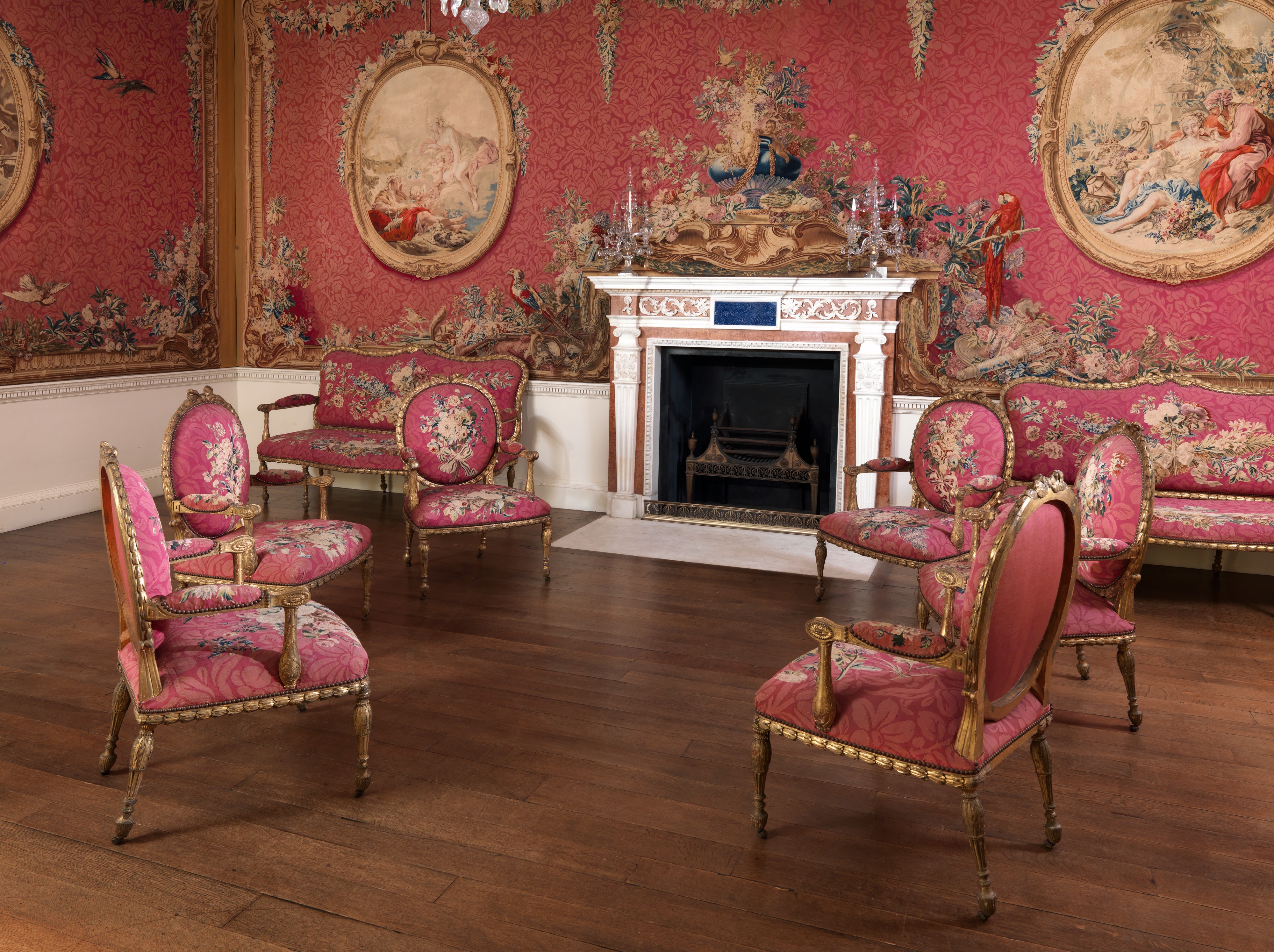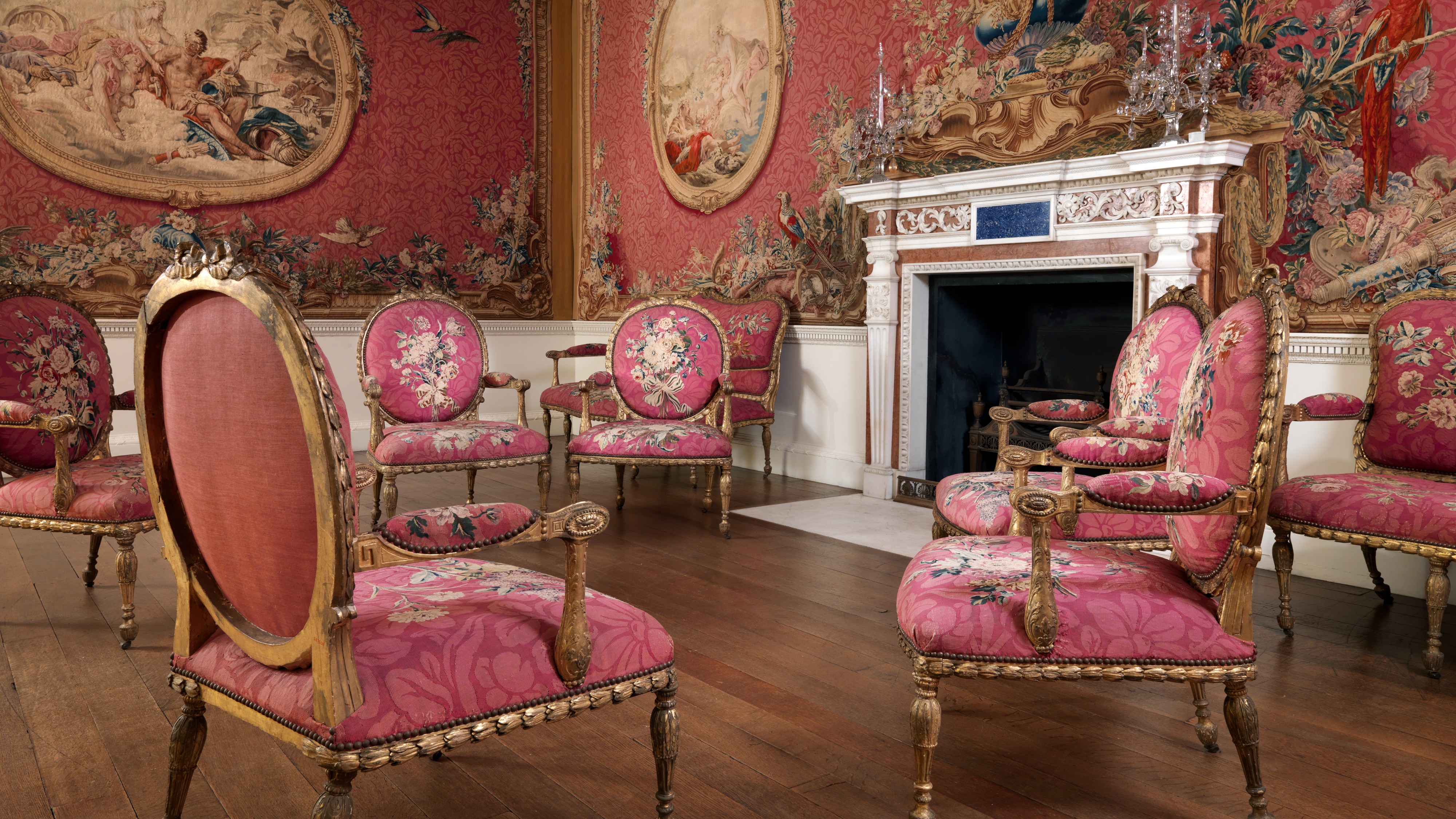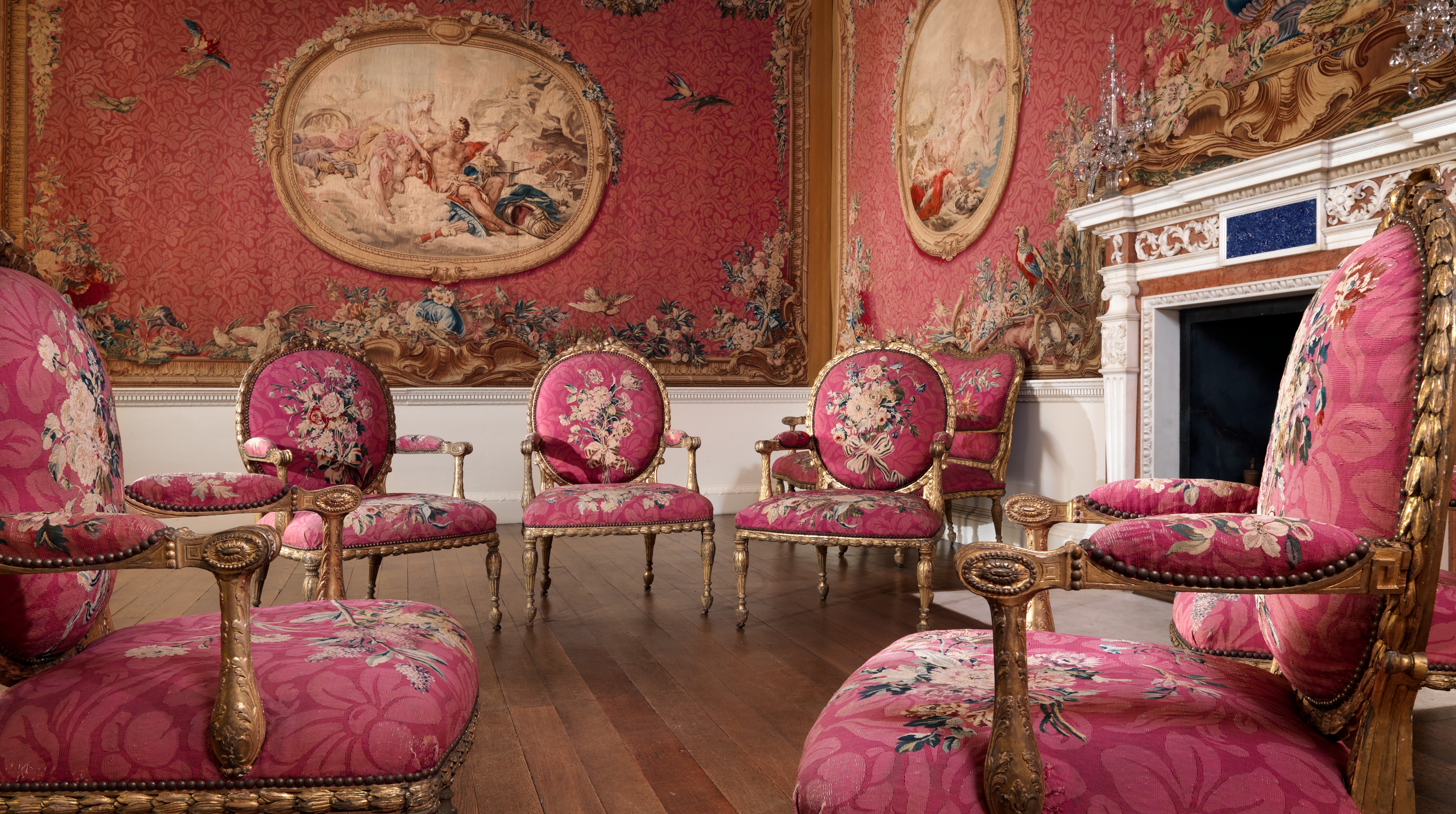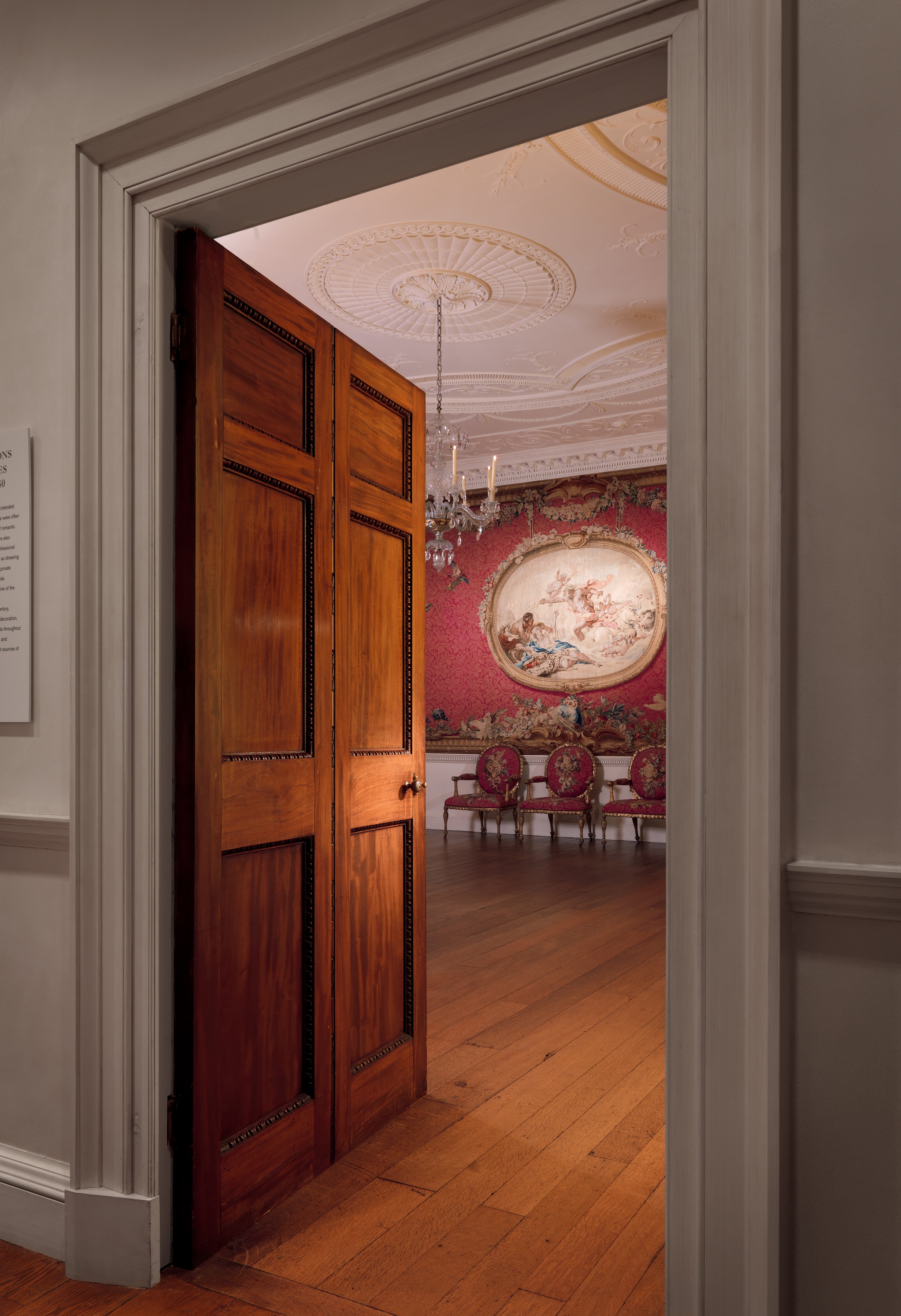Armchair (one of a set of six)
The Museum's set of six armchairs and two settees from the Tapestry Room at Croome Court, Worcestershire, formerly the seat of the earls of Coventry, is among the best documented of all English Neoclassical furniture.¹ It was executed by the leading London cabinetmakers, John Mayhew and William Ince² who in 1769 billed the owner of Croome, George William, the sixth earl (1721-1809), for "6 Large Antique Elbow Chairs, with oval Backs, Carv'd with Double husks & ribbon, knot on top, Gilt in the Best Burnish'd Gold, Stuff'd with Besthair, in Linen, Backt with Fine Crimson Tammy, proper for Covering with Tapistry in the Country, the patterns included. 2 Settees for Each Side the Chimney, richly Carv'd & Gilt, Stuff'd & Cover'd to match the chairs. 10 Setts of Castors, with Screws, & fixing to the Chairs & Sofas."³ The floral cartoons for the furniture covers were executed from 1760 to 1767 at the Gobelins Manufactory in Paris by Maurice Jacques (1712-1784) and the decorative artist Louis Tessier (1719/20-1781).
In England this was the first instance in which seat covers were designed en suite with a set of tapestry hangings, which were intended to be used rather like wallpaper, covering the walls from chair rail to cornice. The tapestries had a series of trompe l'oeil medallions with scenes designed by François Boucher (1703-1770) representing allegories of the elements: Air, Earth, Fire, and Water. The tapestries were finally installed in June 1771 by Mayhew and Ince: "Three Men's time at Croome putting up the Tapestry." This was the first of several sets of this group of tapestries, called the Tentures de Boucher, woven at the Gobelins for English houses, of which the best known are the ones made for Osterley Park, Middle-sex; Newby Hall, North Yorkshire; Weston Park, Shropshire; and Moor Park, Hertfordshire (now at Aske, North Yorkshire).
Between 1902 and 1904 the ninth earl of Coventry sold the tapestries and tapestry-covered furniture and recovered the walls with green damask. Subsequently the original seat covers were acquired by a dealer in Paris, who removed and applied them to a set of modern frames in the Louis XV style. The Tapestry Room from Croome Court was given to the Metropolitan Museum by the Samuel H. Kress Foundation in 1958, together with the modern set of frames. In the following year the original frames were discovered in a warehouse in Paris. They were purchased by the Kress Foundation and shipped to the Museum, where they were refitted with their original tapestry covers.
[William Rieder, adapted from European Furniture in The Metropolitan Museum of Art – Highlights of the Collection/ Daniëlle O. Kisluk-Grosheide, Wolfram Koeppe, William Rieder ; photography by Joseph Coscia, Jr; New York: Metropolitan Museum of Art; New Haven: Yale University Press, 2006]
1. The accession numbers of the entire set are 58.75.15-22.
2. Geoffrey Beard and Christopher Gilbert, eds. Dictionary of English Furniture Makers 1660-1840, Leeds, 1986, pp. 589-98 (entry by Hugh Roberts and Charles Cator).
3. Quoted in Carl Christian Dauterman, James Parker, and Edith Appleton Standen, Decorative Art from the Samuel H. Kress Collection at the Metropolitan Museum of Art, London, 1964, pp. 35-38, no. 2a-h, figs. 11-14. The entry by James Parker contains further quotations of the bills and a bibliography. The best account of this furniture and of the Tapestry Room as a whole, by James Parker and Edith Standen, is found in this volume. See also William Rieder, "The Croome Court Tapestry Room, Worcestershire, 1771" in Amelia Peck et. al., Period Rooms in the Metropolitan Museum of Art, New York 1996.
Due to rights restrictions, this image cannot be enlarged, viewed at full screen, or downloaded.
This artwork is meant to be viewed from right to left. Scroll left to view more.


